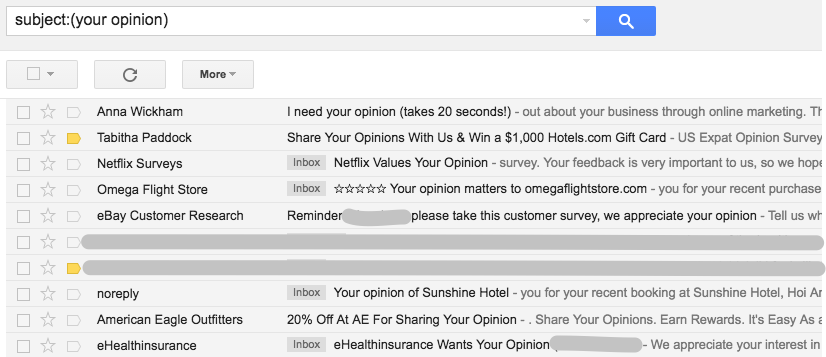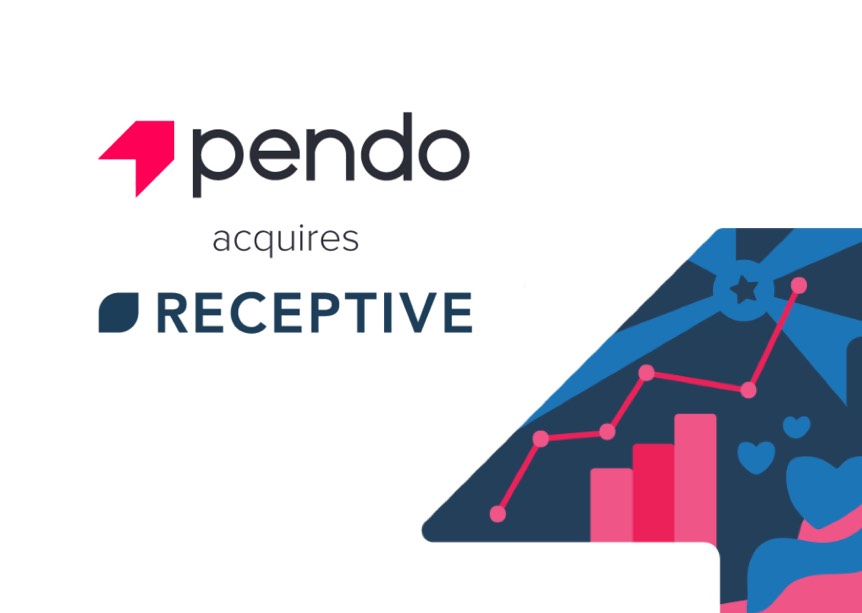.jpg)
I’ve handed out my email to many companies. Whether it’s to download an ebook or signing up for a trial, or even becoming a customer, I’ve given my email out a lot.
And over and over and over and over I’m inundated with different requests for feedback. “Tell us what you think!”, “We value your opinion!”, “We’re practically on our knees here!”. (Okay, so that last one might not quite be true…)

Just a few examples of feedback requests - what does your inbox look like?
Now, don’t get me wrong, there’s absolutely nothing wrong with obtaining customer feedback. It’d be super hypocritical of me to suggest otherwise! But the ways in which companies are trying to obtain it are outdated, and worse; they’re selfish.
Ten years ago, you could ask people for feedback and they’d get all flustered and excited at the prospect of being listened to. Nowadays? They’re over it.
The vast majority of people who fill out these surveys (especially NPS, but that’s a different story) will never receive a personalized response, and the chances of seeing their suggestions actually taken on board is a big fat zero. (Maybe a 0.1.)
Unfortunately for you SaaS companies, your non-SaaS forefathers have paved the way for an inherent distrust in feedback questions and surveys, and you’re paying the price in awful response rates.
There are basically two ways in which you can convince people to spend time giving feedback. Either bribe them with the likes of Amazon gift cards…
Or…
Give them a reason to care.
.jpg)
Why should your customer spend their time helping you? They’re already paying your bills, what more do what you want?
Don’t trick your customers, give them the power to truly and genuinely guide the development of your product. From those little niggles that soon add up through to the big game-changing, Earth-shattering ideas – you need to listen and you need to take them on board.
How do you do that? Well let’s take a look…
It really couldn’t be simpler. You create a distinct channel to collect feedback. You act on it. And then you communicate.
Told you it was simple.
The Distinct Channel
Your distinct channel needs to be accessible 24/7 and easy enough that your customers can self-serve; that is, they can just rock up and provide feedback in the easiest way possible.
Make it easy. Make it quick. Get some feedback that’ll stick. (Shakespeare would be proud!)
By opening up a distinct channel of feedback, you’re sending out a message. You aren’t just asking for the sake of it, you aren’t asking for the warm fuzzy feeling you get – you’re asking because you honestly want to know what they’re thinking.
.jpg)
Sending out an email request will only give you the information relevant at that one moment. That’s a pretty big limitation. A distinct channel will provide a historical overview of what was important then, what is important now, and what will be important in the future. It’s like A Christmas Carol, but far less festive.
You’re getting real feedback. And that’s real-ly important.
Acting on the Feedback
Of course, collecting feedback is nothing more than a pat on the back if you aren’t going to use it in some way.
I should make it clear that we are definitely not saying you should go and build everything that your customers ask for. There needs to be a balance between feedback and your own strategy.
That being said, there’s no point wasting time and resources on features that your customers won’t use. The demand data you collect will help you avoid those features and allow you to focus on what’s important.
The easiest way to untangle the web of feedback you’ve got is to segment it. Split it up into churned users, free trailers, large accounts, etc.
Communicating
The final step is to maintain communication with your customers. You need to let them know that you’re taking their feedback on board.
A lot of SaaS companies realize this but fail to put it into action. The reason for this is that it can seem daunting to respond to every single piece of feedback.
Our solution? Don’t.
Instead of manually responding to everything, select a top percentage of your requests and respond to those. Obviously the figure will vary depending on the amount of feedback you get, but 5-10% is typically a good starting point.
This will spare you from replying to everything, but will demonstrate that you are actually doing something with their feedback.
Whether it’s good news or bad, you need to let them know, explaining why you’re either going ahead with, or rejecting, their idea.
Why am I Droning On?
Why? Because it’s so important! It’s important to your customers, and it’s important to you. I get it, you want to see some tangible benefits. Fine! How about these?
-
Your customer success teams will be able to track who wants what, without any manual effort on their part.
-
Your support team will see the number of tickets drastically decrease.
-
Your product team will be able to build a better product, knowing exactly what your customers want.
-
Your internal teams and stakeholders will know why you’re building what you’re building and be fully on board.
That all sounds pretty good to me.
Why not put all this advice to good use?. Request a callback to see if Receptive is a good fit for you



